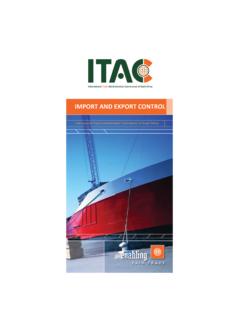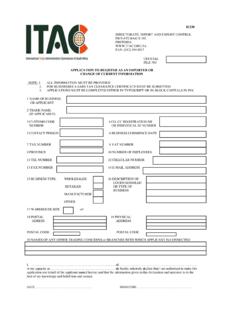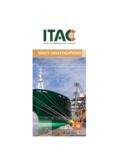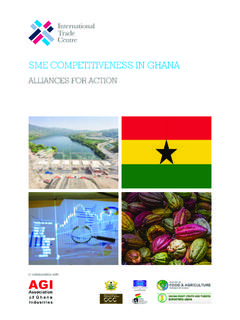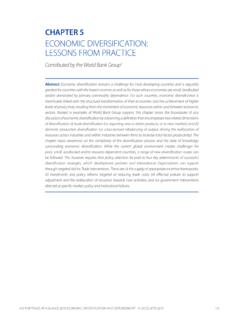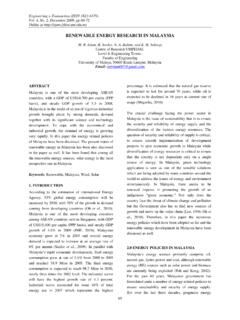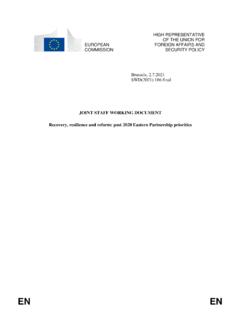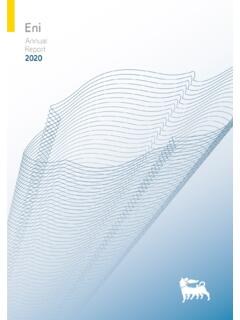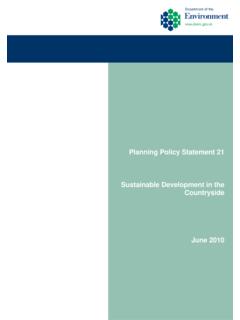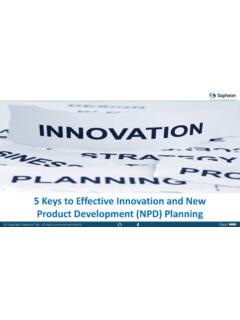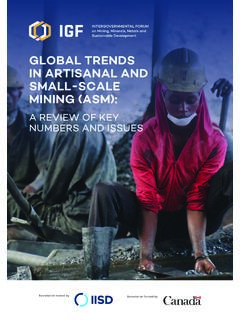Transcription of A South African Trade Policy and Strategy Framework
1 A South African Trade Policy AND Strategy Framework May 2010 Prepared by the International Trade and economic Development Division of the Department of Trade and Industry, South Africa 77 Meintjies Street Sunnyside 0001 A South African Trade Policy AND Strategy Framework , April 2010 ii TABLE OF CONTENTS Foreword by Honourable Dr. Rob Davies, Minister of Trade and Industry, South Africa .. v Acknowledgements by Xavier Carim, Deputy Director General, International Trade and economic Development Division, the dti .. vi Additional Consultations .. viii Acronyms .. x Tariff Reform and Trade Performance: A Review .. xiii A Strategic Tariff Policy : Future Perspectives .. xiv Agriculture ..xv Strategic Integration: A Trade Strategy for South Africa .. xvii Future Work .. xx SECTION 1 1 Outline of the Trade Policy and Strategy 6 SECTION 7 Changes in Global Trade : Re-Thinking Trade 7 SECTION 11 Perspectives on South Africa s Trade Reform 11 South Africa s Trade Performance: A Brief Review.
2 13 Tariff Reforms since 1994 .. 14 SECTION 16 Future Directions for Tariff Policy .. 16 Agricultural Trade 19 The International Trade Administration Commission (ITAC) .. 21 SECTION 23 Strategic Integration into the Global Economy .. 23 The African 23 Spatial Development Initiatives (SDIs).. 24 Regional and Bilateral Relations .. 25 Southern Africa .. 27 The Southern African Customs Union (SACU) .. 28 The Southern African Development Community (SADC).. 29 A South African Trade Policy AND Strategy Framework , April 2010 iii The economic Partnership Agreements and Regional Integration in Southern Africa 31 Opportunities for South - South Cooperation .. 31 Relations with Countries of the 33 The World Trade Organisation and the Doha 34 Assessing the Trade Responses to the Global economic Crisis .. 37 SECTION 39 An Agenda for Future Trade Policy 39 Trade in 39 Approaching Other New Generation Trade Issues.
3 41 Accompanying Policies .. 42 Institutional Challenges .. 43 SECTION 48 Summary and Recommendations .. 48 References .. 50 Glossary of Terms .. 53 Annexure 64 Trade Trends 1994-2008 .. 64 Table 1 Top 10 Individual Trading Partners - Total 64 Table 2 Top 10 Key Trading Regions - Total Trade1994 - 2008 .. 65 Table 3 Top 10 Trading Partners by Imports 1994 - 2008 .. 66 Table 4 Top 10 Key Trading Regions By Imports 1994 - 2008 .. 68 Table 5 Top 10 Individual Trading Partners By Exports 1994 - 2008 .. 69 Table 6 Top 10 Key Trading Regions By Exports 1994 - 2008 .. 70 Top 10 Individual Trading Partners Composition of Trade ..71 Key Trading Regions Composition of Trade ..72 Table 7 Fastest Growing Trade Partners 1994 - 2008 .. 73 Table 8 Fastest Growing Trade Partners by Imports 1994 - 2008 .. 74 Table 9 Fastest Growing Trade Partners by Exports 1994 - 2008.
4 74 Annexure 76 Trade trends Focus on Africa .. 76 Table 10 Import Partners By Share of Total Trade 1994 - 2008 .. 76 Table 11 Top 10 Individual Export Partners Total Trade 1994 - 2008 .. 77 Table 12 Top Fastest Growing Import Partners 2006 - 2008 .. 78 Table 13 Fastest Growing Export Partners 2006 - 79 A South African Trade Policy AND Strategy Framework , April 2010 iv Trade trends Focus on SADC .. 80 Table 14 Top 5 Import Partners 1994 - 80 Table 15 Top 5 Export Partners 1994 - 81 Table 16 Top Fastest Growing Import Partners 2006 - 2008 .. 81 Table 17 Top 10 Fastest Growing Export Partners 2006 - 2008 .. 82 Notes on data discrepancies .. 83 Intra-SA imports .. 83 Imports from Malawi .. 83 A South African Trade Policy AND Strategy Framework , April 2010 v Foreword by the Honourable Dr. Rob Davies, Minister of Trade and Industry, South Africa Through the International Trade and economic Development (ITED) Division, the Department of Trade and Industry (the dti) initiated a Review of South Africa s Trade Policy in mid-2007.
5 Several considerations underpinned this undertaking. First, it was considered necessary to review and assess the experience and lessons of the Trade reform process that had been undertaken in South Africa following the advent of the democratic transformation in 1994. Second, it appeared necessary to better clarify and define the contribution Trade Policy can make to the South African Government s broad economic development Strategy . These objectives include, amongst others, inclusive economic growth and development, industrial upgrading, poverty reduction through sustainable employment and the provision of decent jobs. Third, with the adoption of South Africa s National Industrial Policy Framework (NIPF) in 2007, it has become increasingly important to specify with greater clarity how Trade Policy will complement and support South Africa s industrial upgrading and diversification objectives.
6 The NIPF states that our fundamental approach is that tariff Policy should be decided primarily on a sector by sector basis, dictated by the needs and imperatives of sector strategies . In this context, the South African Trade Policy and Strategy Framework sets out the contribution Trade Policy should make to advancing industrial development, upgrading and diversification along a growth path that addresses structural constraints in the economy, including unemployment and poverty. The Framework sets out the key principles and approaches to South Africa s Strategy for global integration with respect to our engagements and negotiations at multilateral, regional and bilateral levels. A South African Trade Policy AND Strategy Framework , April 2010 vi Acknowledgements by Xavier Carim, Deputy Director General, International Trade and economic Development Division, the dti This Trade Policy and Strategy Framework (TPSF) document is the outcome of a two-year consultative review process.
7 Under the guidance of Deputy Minister, and then, Minister Dr. Rob Davies, a reference team the Trade Policy Review Group (TPRG) - was established bringing together Trade Policy experts from within and outside government to review South Africa s Trade Policy and Strategy since 1994 and to recommend an approach on Policy and Strategy in light of lessons learned, emerging challenges and in the context of the further evolution of the South African Government s broader economic development Strategy . The TPRG was tasked with guiding the process of developing recommendations on Trade Policy and Strategy that would support the Government s broader objectives. While Trade Policy and Strategy have a range of inter-linkages to broader economic Policy , this work programme has focused on an assessment of tariff reform in South Africa since 1994, and an overview of South Africa s Trade performance since 1994 in order to lay the basis for making recommendations as to how tariff Policy could support the wider objectives of industrial upgrading and employment.
8 The Framework offers Policy guidance on Trade and tariff Policy and Strategy over the medium term and provides greater clarity on the linkages between Trade and tariff Policy and industrial Policy . It also sets out in a single document, the key principles and thrust of South Africa s Strategy for global Trade integration. The work on Trade Strategy draws extensively from a series of Policy briefs and analysis prepared by ITED over the last decade. Minister Rob Davies provided strong political oversight over the process of preparing the Framework . While his oversight assisted in drawing out the key linkages in between Trade and industrial Policy , he also provided detailed technical advice on key aspects of the work including on the Trade Strategy . The first meeting was held on the 17 April 2007, where an outline of the work-programme was agreed and stakeholders identified.
9 In all, the Group met five times. Initially, it provided guidance on the structure and key substantive issues A South African Trade Policy AND Strategy Framework , April 2010 vii that needed to be covered. In further meeting, the TPRG offered guidance on the various iterations of the Framework document to consolidate and refine the evolving document. The first consolidated draft Report was considered on the 24 November 2008 where detailed changes were proposed both on the structure and the content of the work. The second draft was adopted on the 20 July 2009 with limited changes proposed on the structure. The International Trade and Administration Commission (ITAC) and the Trade and Industrial Policy Secretariat (TIPS) played key roles in clarifying South Africa s tariff profile and providing an assessment of Trade performance since 1994.
10 Representatives from the Department of Agriculture, Forestry and Fisheries submitted substantive input on the agricultural sections of the Framework . Capacity was also built in the Office of the Deputy Director-General: ITED for research management and coordination through the process of completing the final document. While the DTI takes full responsibility for any shortcomings and errors, the Framework was the outcome of this consultative process. We extend our sincere appreciation to those participants who gave their time and shared their expertise. Our gratitude goes to: Siyabulela Tsengiwe and Chris Arnold from ITAC; Elizabeth van Reenen and Ezra Steenkamp from the Department of Agriculture, Fisheries and Forestry; Marissa Fassler and Tanya Kandiero from the National Treasury; Neva Magketla formerly with the Presidency and now with the DBSA; Mills Soko from the University of Cape Town Graduate School of Business; Stephen Hanival and Ximena Gonzalez from the Trade and Industrial Policy Secretariat; Neo Chabane formerly with the Presidency and now with the Competition Commission; Catherine Grant from Business Unity South Africa; Nolundi Dikweni and Patrick Krappie from the Department of International Relations and Cooperation; Ravi Naidoo formerly with DTI and now with the DBSA.



